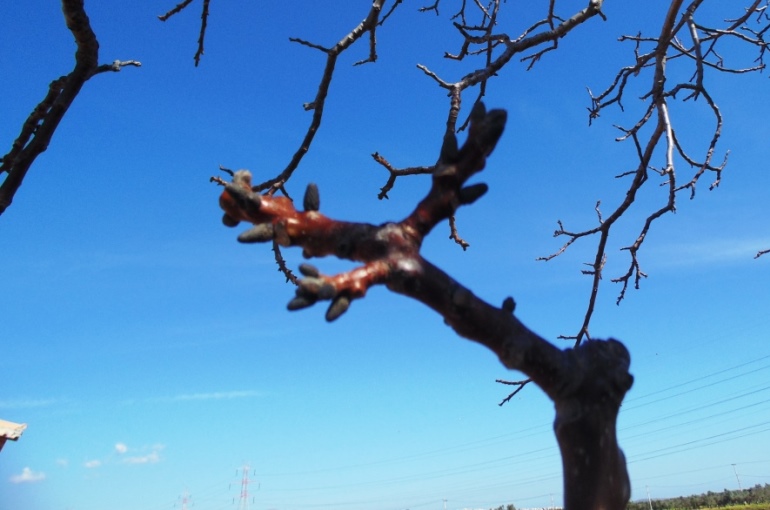Walnut Tree Propagation and Pollination

This post is also available in:
This post is also available in:
![]() Español (Spanish)
Español (Spanish) ![]() Français (French)
Français (French) ![]() Deutsch (German)
Deutsch (German) ![]() Nederlands (Dutch)
Nederlands (Dutch) ![]() العربية (Arabic)
العربية (Arabic) ![]() Türkçe (Turkish)
Türkçe (Turkish) ![]() 简体中文 (Chinese (Simplified))
简体中文 (Chinese (Simplified)) ![]() Italiano (Italian)
Italiano (Italian) ![]() Ελληνικά (Greek)
Ελληνικά (Greek) ![]() Português (Portuguese (Brazil))
Português (Portuguese (Brazil))
Propagating and Pollinating English and Black Walnut Trees
Walnut Tree Propagation
In the wild, walnut trees are propagated by seeds. However, in commercial walnut orchards, walnut trees are propagated by grafting or budding scions in rootstocks that have already been planted in the field. Professional walnut growers benefit from a tree that is a combination of two different plant tissues, the rootstock and the scion. The rootstock is the lower part of the tree and produces the root system. The scion produces the upper part of the tree and of course determines nut’s characteristics. In most US regions, walnut trees are propagated by budding the rootstock from August to September, while grafting can take place during spring and after the rootstock has produced some leaves.
The walnut rootstocks are propagated mostly by seed. When we plan to grow black or English walnut rootstocks from seed, we shall either sow the selected seeds during autumn in the nursery or stratify them in sand for approximately 3 months (temperature 36-39°F or 2-4°C). Two common types of seedling rootstock are Northern California black walnut (Juglans hindsii) and Paradox hybrid (a hybrid cross of J. hindsii x J. regia)
Walnut Tree Pollination
Every walnut tree has both male and female flower parts. Pollen is transferred by wind from male to female flower parts. All walnut varieties are self-fertile, meaning that the pollen can travel from the male parts to the female parts of the same tree and under this procedure the tree can produce nuts. Thus, a single tree can theoretically produce nuts without needing other walnut trees around. However, in most cases, pollen that is transferred through the wind to the female parts of the same tree (stigma) is often lost, because at that time the female flower is not receptive. Consequently, the best way to ensure adequate pollination in order to achieve the highest possible fruit set and yield is to ensure cross pollination by planting two or more varieties. Planting a walnut variety that produces pollen early, along with another variety that produces pollen later will ensure that adequate pollen will travel throughout the wind to female flowers of both varieties during the period of their receptivity. Most walnut farmers plant 1 row of pollinator variety to every 8-12 or more rows of the main variety. They plant the row with the pollinator trees perpendicularly to the wind direction in order to maximize wind pollen dispersal. Moreover, having all the pollinator trees planted in the same row will make harvesting and sorting of different nuts much easier. However, some walnut farmers plant randomly the trees of the pollinating varieties in the walnut orchard.
You can enrich this article by adding a comment or photo of your walnut trees propagation and pollination methods.
2.) How to grow Walnut Tree from nuts
4.) Walnut Tree Climate Requirements
5.) Walnut Tree Soil Requirements & Preparation
6.) Walnut Tree Propagation & Pollination
7.) Planting Walnut Trees – Number of Walnut Trees per Acre
8.) Walnut Tree Pruning and Thinning
9.) Walnut Tree Water Requirements
10.) Walnut Tree Fertilizer Requirements
11.) Walnut Tree Harvest & Yields
12.) Walnut Tree Diseases & Pests
14.) Wholesale walnuts online – Current Walnut Prices
Do you have experience in Walnut Tree cultivation? Please share your experience, methods and practices in the comments below. All the content you add will be soon reviewed by our agronomists. Once approved, it will be added to Wikifarmer.com and it will influence positively thousands of new and experienced farmers across the world.








































































